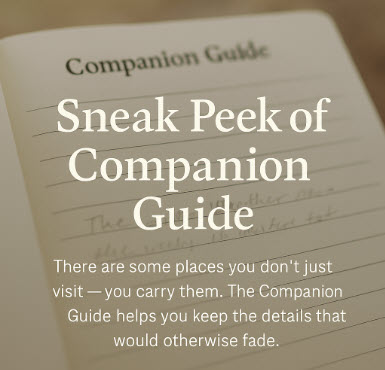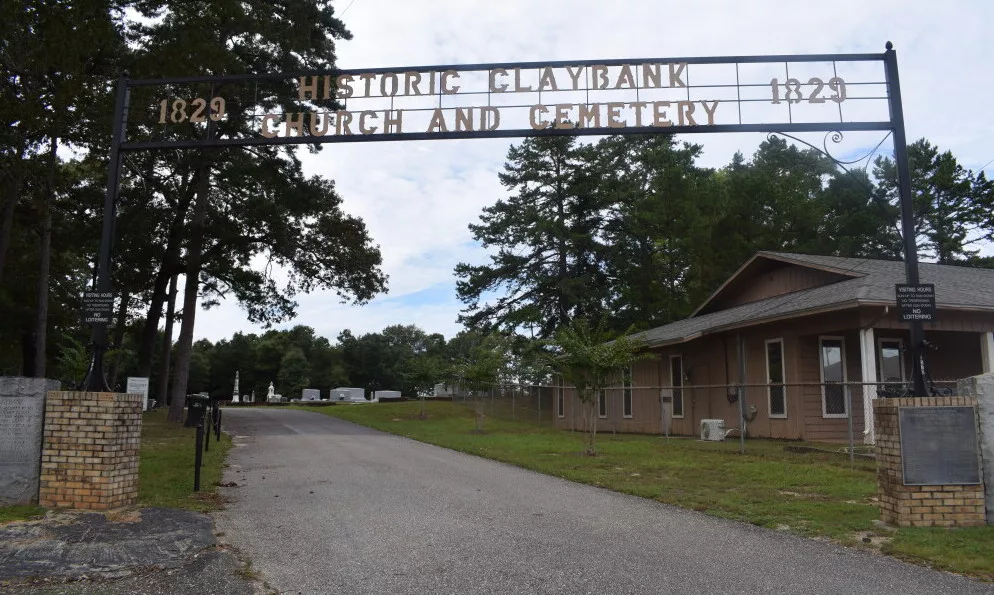Alabama Road Trip #2 | Side Road Saturday
We were headed to chase ghosts, if I remember right.
A haunted house, a tip, a rumor. But then a brown sign blinked past our window: Claybank Log Church.
Dusty and I locked eyes.
The brakes answered before we did.
There’s something magical about unplanned stops—the kind that don’t just fill time, but shift it. Claybank Church wasn’t on our itinerary, but the moment we stepped onto the quiet hillside, time rewound.

A Relic from the Early Wiregrass Days
Just a block off the bustle of U.S. Highway 231, Claybank Church sits tucked into the trees like it’s been hiding in plain sight since 1852. Made of hand-hewn pine and iron-hard determination, it’s one of the oldest surviving structures in Dale County and a rare Civil War-era site still standing in Alabama’s Wiregrass region.
Before the church you see now, a rough log meeting house stood on this land as early as 1829—serving as school, sanctuary, and town hall all in one. Claybank’s story is one of grit and community: of settlers shaping civilization from wild pines and red clay.
More Than a Church
Claybank wasn’t just a place to worship. It was a one-room schoolhouse, a polling station, a community gathering point. The thick logs still bear tool marks from a time when everything had to be carved by hand. The shutters swing instead of windows. There’s no AC, no insulation—just timber and time.
Inside, wide plank floors whisper under every step. Outside, the cemetery sprawls up the hill in the shade of the pines, with gravestones dating back almost two centuries. Some markers are ornate, others plain. All are peaceful.
A Ghost Story Without the Ghosts
Yes, some say the church is haunted. But I didn’t feel watched—I felt welcomed. The quiet wasn’t eerie; it was sacred – like the land was listening.
So if you’re the kind of traveler who builds extra time into your trip just in case something wonderful detours you—this is your payoff. Claybank was ours.
Plan Your Visit
- Open Hours: Grounds are open during daylight. No reservations or fees.
- Location: From U.S. 231 in Ozark, turn onto Andrews Ave (Hwy 289), go one block, then follow signs up the hill.
- Accessibility: The path is unpaved and hilly. It’s peaceful, but may be tricky after rain.
- Photography Tip: Golden hour light through the trees turns the logs honey-colored.
- Want to See Inside?: Try visiting during heritage days or reach out to local history groups.

Make a Day of It
You’re not far from:
- Eagle Stadium (WPA-era ballpark)
- U.S. Army Aviation Museum (incredible aircraft collection)
- Ed Lisenby or Dale County Public Lake (for fishing or picnicking)
- Ozark’s Main Street (antiques, diners, and small-town charm)
🔍 Echo’s Corner
Whispers in the Wood Grain
If you press your hand against the old church walls, you might feel more than rough bark and pine sap. Those logs weren’t shaped by machines—they were carved by calloused hands with broad axes, felling trees and notching beams before breakfast. Some still bear the marks of those tools, like signatures etched in shadow.
There’s no electricity at Claybank, but the building hums all the same. Wind threads through the shuttered windows. Floorboards creak without a footstep. Even the pews, worn smooth by generations of worshippers, seem to remember.
Locals say the church is haunted. Maybe.
Or maybe that’s just what it sounds like when a place refuses to forget.
Final Thoughts
We never meant to find Claybank that day.
But I’m so glad we did.
In the quiet of those worn floorboards and whispering pines, something settled in me. Not fear. Not awe. Just…stillness. And maybe that’s the real ghost of Claybank: the echo of lives that shaped a town, and the travelers who still stumble onto their stories.
Murph didn’t see this one coming.
Claybank was a surprise stop, but I’m glad my camera was ready. I’ve shared a full album with the church, the cemetery, and the stories that still linger in the wood grain.
👀 Flip through the full Claybank photo album
Some stories are found in museums. Others are tucked behind a row of pine trees on the side of a hill.

If you see this after your page is loaded completely, leafletJS files are missing.

